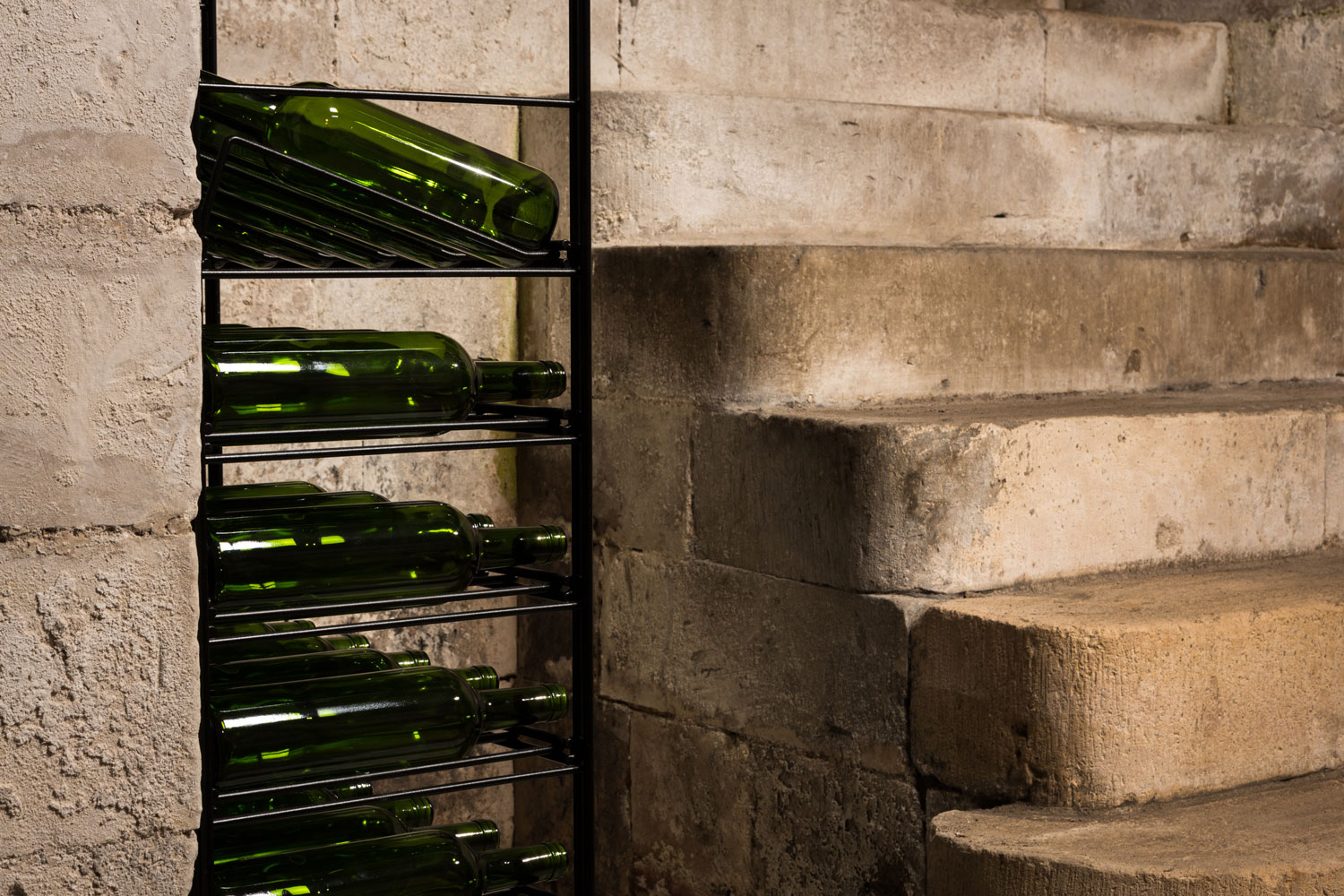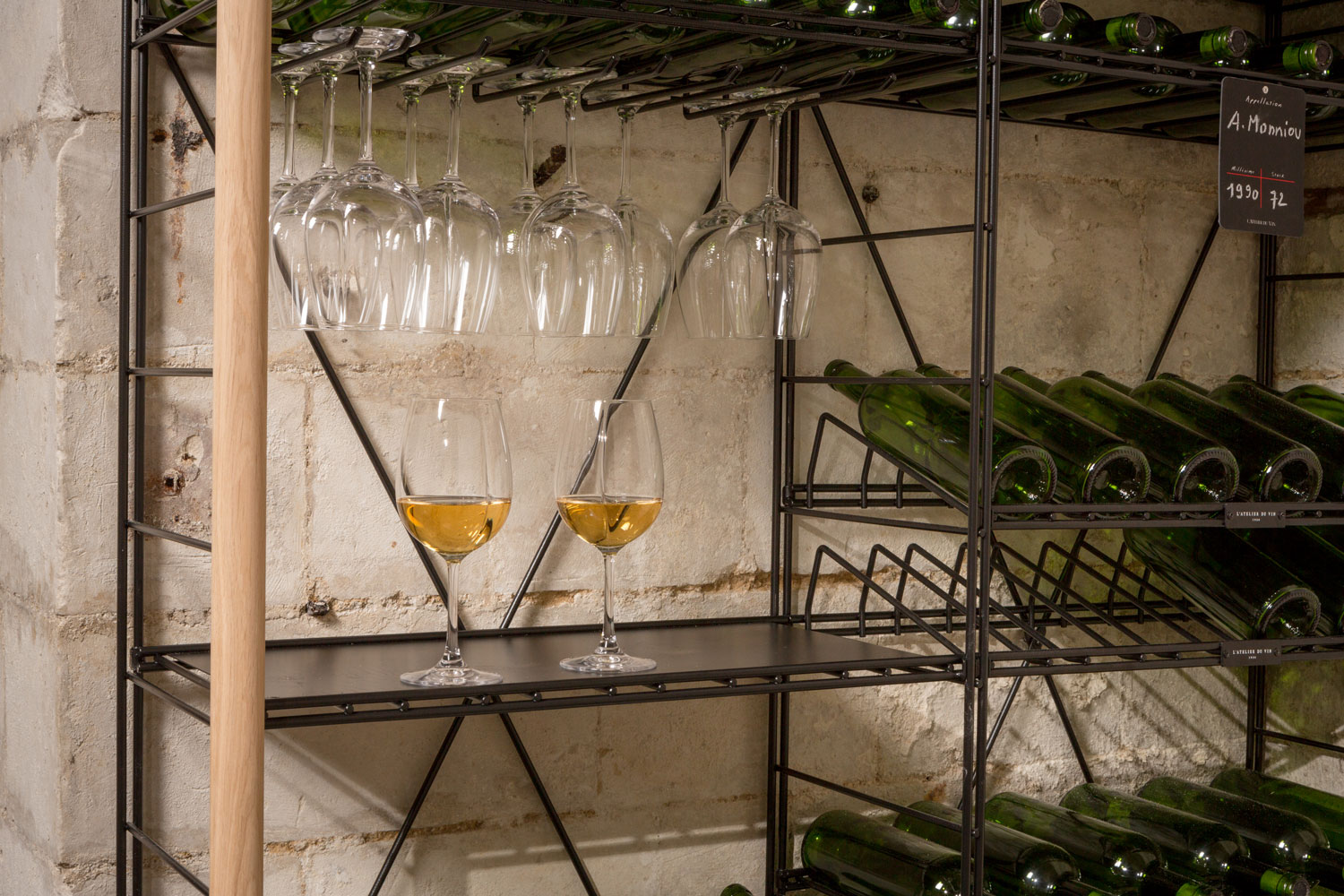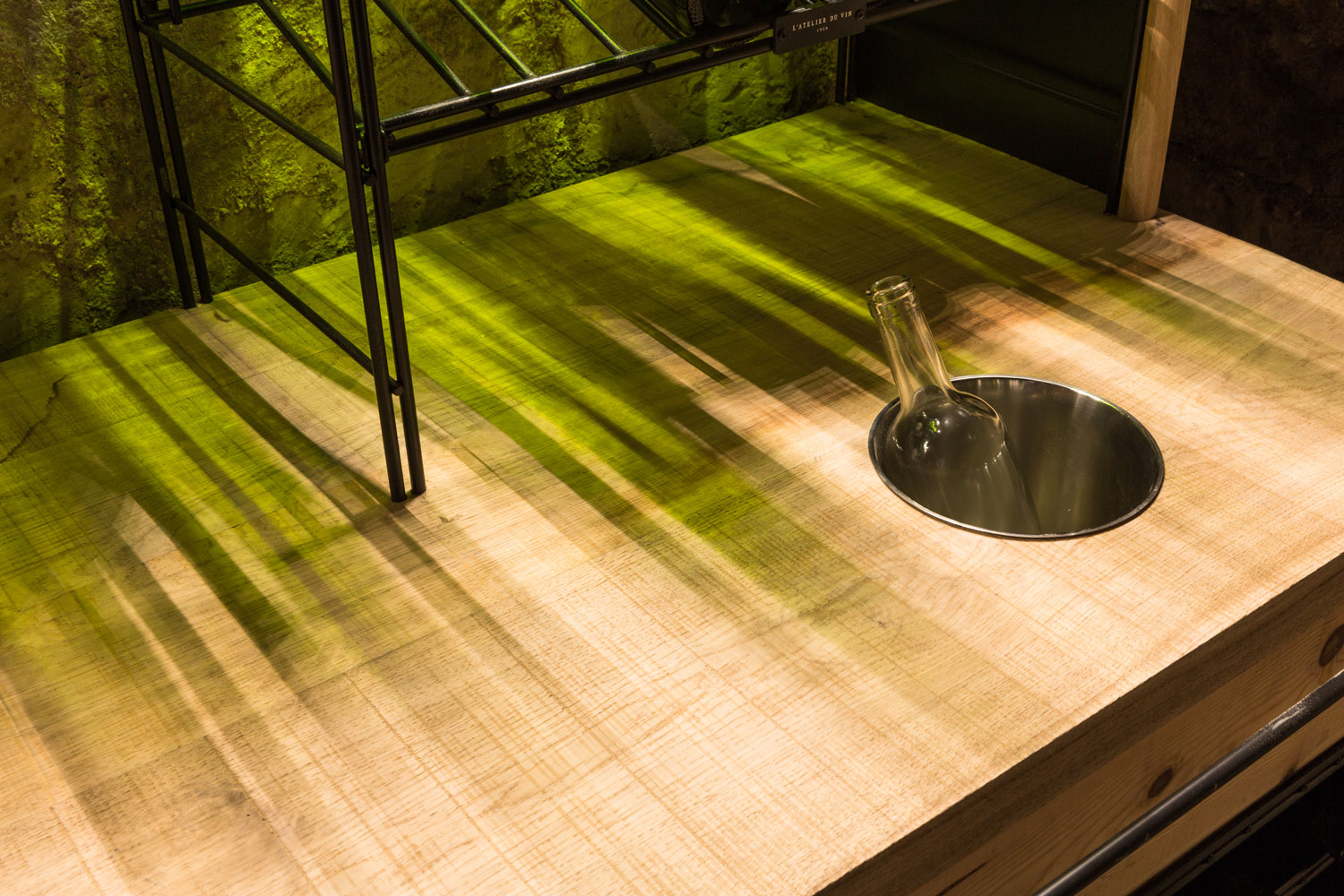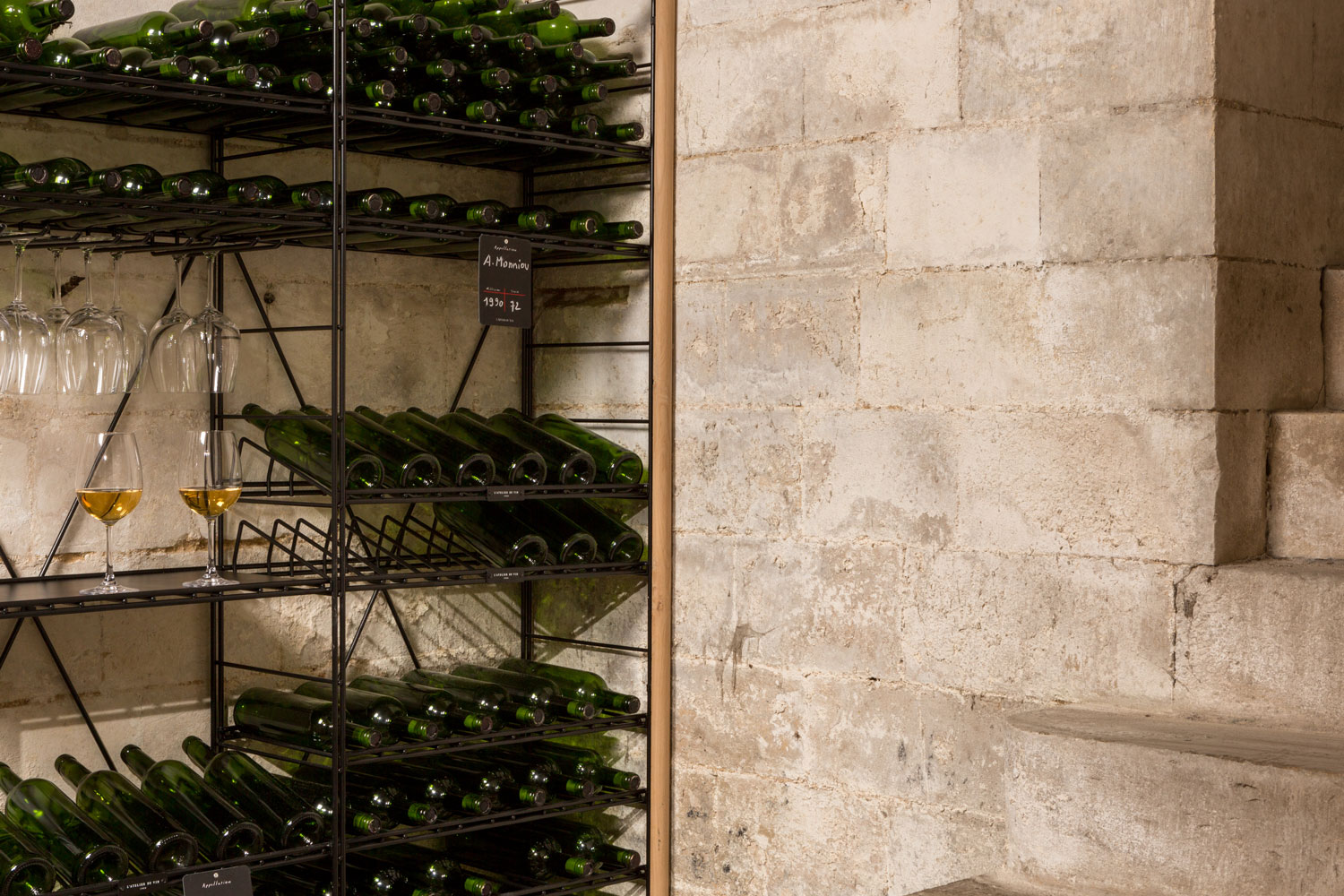What different types of wine cellar can be used for storing wine?
One wine cellar can be completely different from another. The way the cellar is designed and installed may vary—depending on the cellar’s primary purpose and the character of the wines it will house—with different options such as its location, interior architecture and temperature to be considered. Sensitive to the slightest change in environment, your wine bottles should be housed in the optimal conditions for a given purpose. When considering the different types of wine storage solutions available, it is, therefore, essential to have a clear vision of the purpose of your project in order to fit out a wine cellar that will perfectly suit your needs over the years.
The 5 main categories of wine cellars
There are several different types of wine cellar and wine storage space in existence, each suited to a different use. When it comes to the age-old art of preserving and aging wines, each of the steps in the oenological ritual must be respected. The way your wine cellar is laid out and designed will therefore vary depending on its purpose and storage scope, with consideration given to 3 key moments in the life cycle of a vintage: the maturation, preparation and opening of the wine. Essentially, every cellar is as unique as its owner. With so many solutions available, it is useful to gain a little clarity by determining which of the following categories of wine cellar is best suited to your needs:
- wine cellars designed for aging and preserving wines,
- wine cellars designed for serving and preparing wines,
- wine cellars designed for wine tastings,
- wine cellars designed for displaying wines,
- multi-purpose wine cellars.
What is an aging wine cellar or a storage space for preserving wines?
An aging wine cellar is designed to preserve and nurture your age-worthy wines patiently over the years as they slowly age to maturity. In order to house the finest vintages in the right conditions over the medium or long term, such a storage space should be designed to allow the bottles to rest for extended periods of time while preventing any external disturbances. Perfectly suited to a wine-producing estate or a family domain, a wine cellar designed for preserving wines is the secret garden of wine specialists, collectors and wine lovers alike.
The ideal conditions for a wine cellar for aging or preserving wines
- The ideal interior temperature of a wine cellar dedicated to preserving wines is 12 °C, which should be kept relatively constant, with 1 or 2 degrees less for white wines or more for red wines being acceptable. Excessive or sudden temperature variations should be avoided.
- The relative humidity of the space should ideally be maintained at a level of around 60% to 70% humidity in the ambient air, which should circulate naturally to avoid unpleasant odors.
- As far as possible, the space where the finest vintages are stored for aging should be kept in darkness—a dim light should be used when making occasional visits to the space. Total peace and calm, free from any vibrations, are necessary for the slow maturation of the wine.
- Given this need for rest in a tranquil environment, a wine cellar dedicated to aging wines should be installed away from the hustle and bustle of everyday life, in a basement or an isolated space without windows.
- Your bottles can be stored in groups—organized by wine family and region—in solid and stable wine cabinets. A floor plan of the cellar, cellar slates and signs are also useful pieces of equipment to have in your storage space, as well as lamps and other wine cellar accessories.
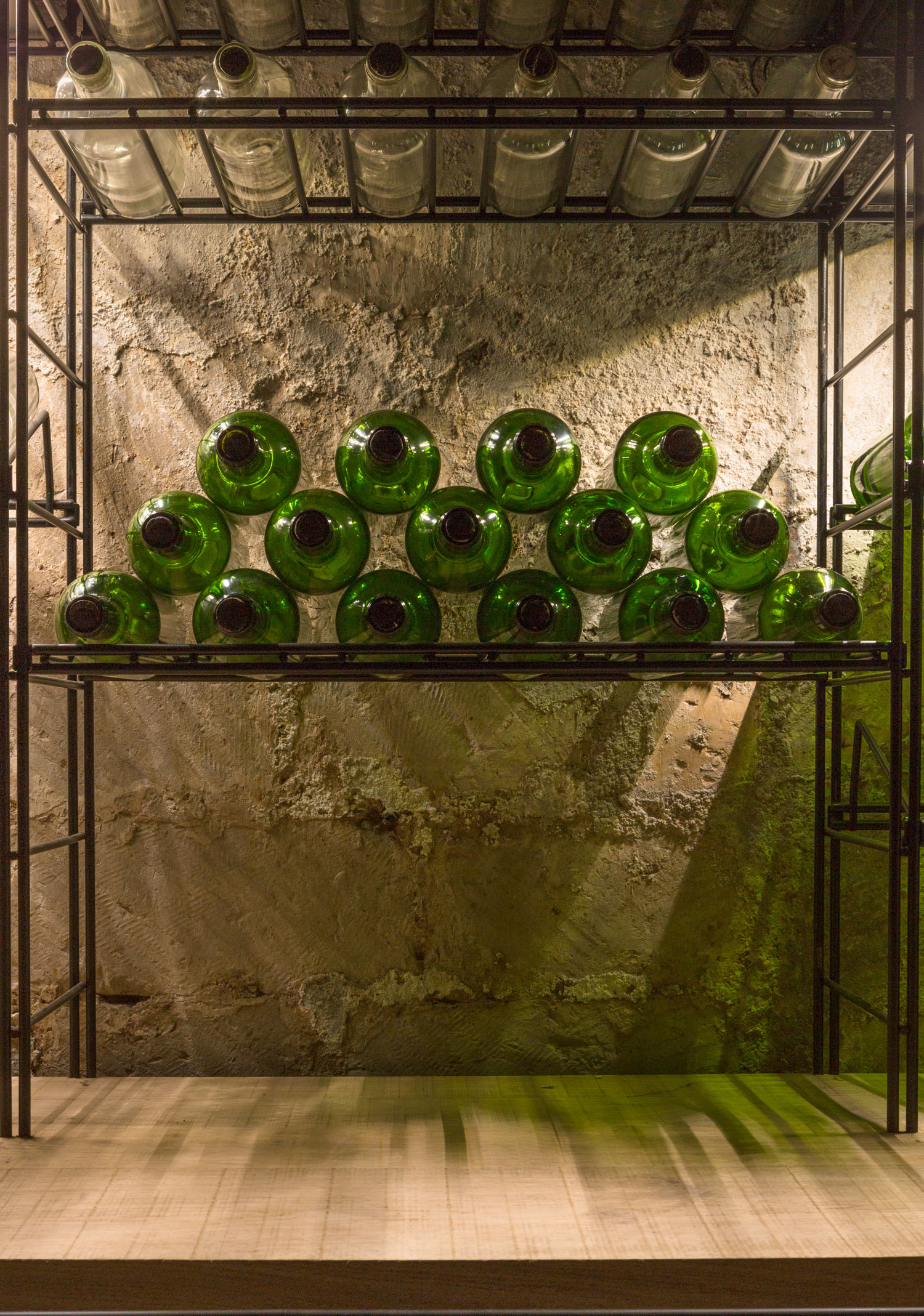
What is a service wine cellar or a space for preparing wines?
A service wine cellar is designed for preparing bottles of wine for opening before they are served. Such a wine cellar or space represents an intermediate stage of preparation that takes place between storage and tasting, in order to offer your bottles an opportunity to wake up gently in the right setting. The antechamber of the sommelier, this type of space may suit the needs of a restaurant or hotel, for example—especially if a large number of wine bottles need to be kept ready for consumption.
The ideal conditions for a service wine cellar or a space for preparing wines
Wine bottles are stored for a short time in a service wine cellar, where they enjoy a brief moment of rest as they are brought to the right temperature for tasting. This preliminary stage before the bottle is opened is very important, enabling the vintage to reveal its aromas at the crucial moment. A wine cellar for white wines is, therefore, much cooler than a wine cellar for red wines, which is closer to room temperature. This is why wine cellars are sometimes divided into 2 separate compartments, each of which is dedicated to its own family of wines.
In terms of location, this type of storage space should be situated in a strategic position—much closer to the service area than the spaces where the wines are stored for aging, but still removed from the outside world and guests or customers. Some light is tolerable, but it should not be too bright. Above all, the room should be designed to facilitate the movements of the sommelier and the people in charge of the cellar or the service. A counter-top and dedicated shelves are useful for positioning the bottles in an upright position ready for opening or pouring into a decanter. Corkscrews and other wine service accessories can also be stored in dedicated drawers for ease of use.
What is a wine cellar for displaying wines?
A display wine cellar is designed to showcase a selection of bottles in a space open to the public. Often found in wine stores, regional product stores, estates or restaurants, or even in the wine sections of supermarkets, this kind of wine cellar or storage space displays vintages ready for consumption. Organized in several sections laid out according to a specific customer journey, a display wine cellar should present the various vintages it houses in a clear, orderly and appealing way, providing the best possible display.
If the cabinet or space houses an extensive variety of bottles, it must be able to effectively convey the required information to the people browsing it—from curious amateurs to meticulous connoisseurs—and meet their different needs. If the owner also needs to mature a part of their wine collection before presenting it to their customers, a wine cellar or space dedicated to aging wines is often considered a useful addition upstream of the display solution.
The ideal conditions for a display wine cellar
At room temperature, a display wine cellar is best suited to soft light, where possible. Customers drawn to the nectar of the gods should be able to find the type of wine, wine region and grape variety they are looking for with ease so that they can select and grasp the bottles of their choice from the carefully arranged selection on display. Of course, how a space for displaying wines is laid out depends on the constraints of the premises, the collection available and the exhibitor’s strategy, which is why it is always best to customize your layout. Fully flexible, modular wine furniture and design units are therefore always preferable to achieve the best results.
If considering wine shelves, the key is to find the right balance between the number of individual, inclined racks and the number of horizontal storage compartments included in the design. Lastly, a vertical bottle display and an explanatory panel for each wine family can improve the ergonomic appeal of the wine storage space. What’s more, a display counter-top can also showcase a wine specialist’s suggestions or a store’s special offers.
What is a multi-purpose wine cellar or space?
A versatile, multi-purpose wine cellar or storage space sets itself apart by being able to perform several of the above functions. Divided between several different rooms or small spaces, such a storage solution must be carefully considered from the outset to meet the needs of its various purposes: from storing wines and preparing wines for service to presenting and sampling wines in the cellar itself to the delight of the lucky guests present for the tasting.
As a result, the interior architecture of a multi-purpose wine cellar is slightly more complex than for other cellars and storage solutions, unfolding over several distinct sections, all the while ensuring a seamless design with a sense of harmony at its core—similar to a small wine-producing estate. Compartmentalized according to each phase of the wine’s development, all of its components must provide the optimal conditions for their respective purposes.
A route for visitors can be defined at the planning stage to offer wine enthusiasts the best possible experience, from the cellar to the palate. L’Atelier du Vin’s experts are here to help you create a customized wine cellar, for personal or professional use, from design to installation.
Do not have an account yet?
